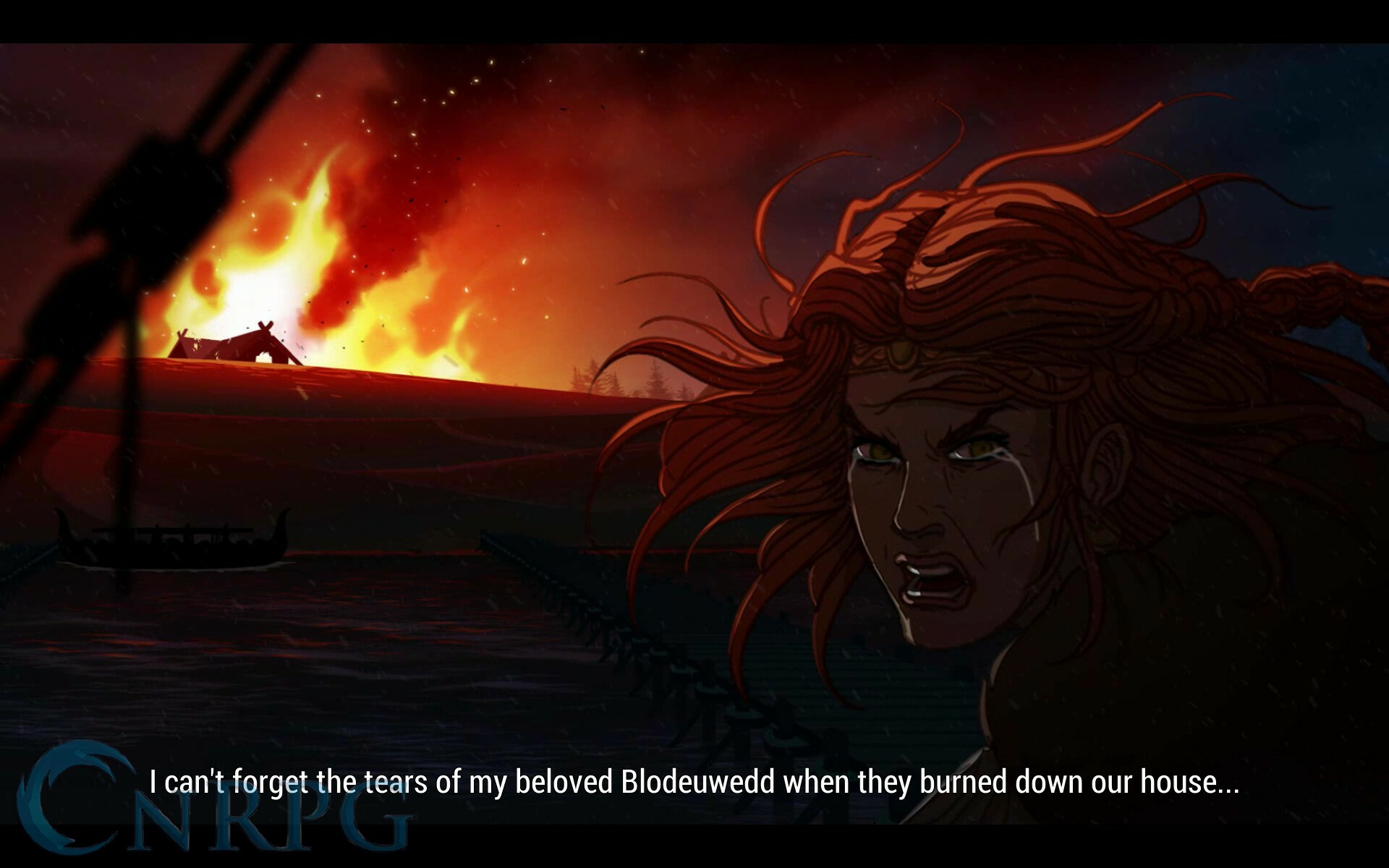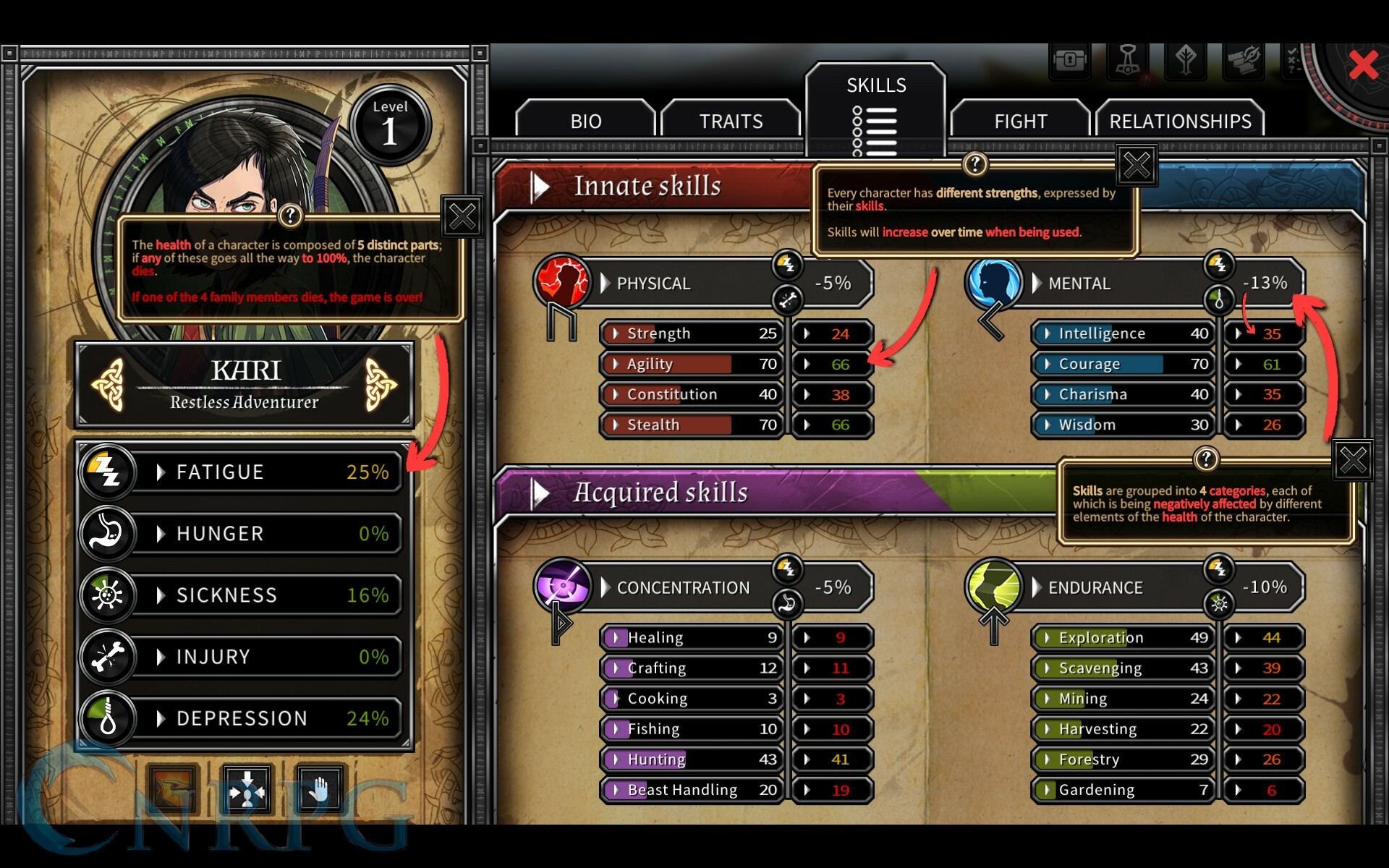by Andrew Skelton (Outfoxed)
There’s something positively satisfying about survival games, even if I’m not the best at them. Maybe it’s the thought that you know better than everyone else, so you’ll do much better. Perhaps it’s learning from prior mistakes to go further each subsequent attempt. Dead in Vinland, developed by CCCP and published by Playdius and Plug In Digital, gives you a chance to prove your survival skills. A sequel to their previous title, Dead in Bermuda, Vinland expands on the original in several ways, such as more building options, an expanded map, and actual combat to overcome. Can it provide a true survival game experience?

Every Viking’s An Island
Dead in Vinland puts you in control of four survivors from the outset. This family escaped the wrath of the Viking Jarl who sought their demise, only to end up deserted on a strange island. Almost immediately they’re accosted by the self-proclaimed lord of the isle, who demands tribute every week, or he’ll come and slaughter the lot of them like cattle.

Sure, it’s a simple story, but it does work for this narrative. The family comes to the island with very little, and has to scavenge the longboat they arrived on for sundry to keep them afloat until they can scrounge more from the land they’ve found themselves on. The game’s tutorial does a good job of showing you the basics of survival in this regard. It shows you how to assign one of your survivors to the various tasks you can complete, such as crafting, exploration, or scavenging. The tutorial also teaches additional important steps like managing food and water. There are some things the tutorial doesn’t cover in-depth, such as the complex relationship system, but it’s quite adequate for everything else.

The Right Job for the Person
As expected from any survival game, Dead in Vinland has you managing the well-being of your survivors. Each one has five primary stats that must be monitored: fatigue, hunger, sickness, injury, and depression. If any of these attributes reach 100%, that character will die — if any of the four starting family die, it’s game over. Fatigue raises just by performing actions, and can be lowered nightly through sleep, or taking a rest in the shelter during the day. Hunger raises naturally at the end of the day. Sickness is raised by consuming raw foods meant to be cooked, amongst other things. Injuries are sustained through combat, and require medicine to heal. Finally, depression increases by performing certain tasks. All of these attributes can also be raised or lowered depending on which (if any) random events you encounter through game play.

Of course, you can’t just have everyone while away their days in the shelter either. In order to succeed and survive, you need to build up your resources. You need to keep a constant eye on your water supply. Characters who spend too long without water will die within days; funny how art imitates life in such subtle ways. The basics of the game then become managing your resources versus managing the needs of your survivors. Yeah, it sounds like every other survival game out there, I recognize, but each of the survivors have their own relationships with the other characters at the camp, and given the events of the game, these relationships can change and evolve. For example, even within the first couple of days, I could already see the cracks forming in the otherwise happy family.

Construction Woes
When you start, your camp is pretty sparse. You have a shelter, some water barrels, and an exploration camp. There’s also your wrecked ship you can salvage, but that has limited gathers before it’s depleted. The most important, immediate station you can use is the crafting station, which allows you to build over a dozen additional structures. For example, you can build a lumber yard to increase your stockpile of wood, or a fishing hut in order to catch tasty sea meats. Building another station will require you to spend some of your resources, though, so this becomes yet another resource management section of the game.

The camp stations also require upkeep to ensure they’re working efficiently (guess what, this also consumes resources!). You need to keep your fire stoked at all times too, as its condition drops nightly, and whenever you convert non-potable water into drinking water. There’s a reason why the game recommends you build a lumber yard first, after all. Thankfully, you’ll also eventually gain access to upgrade your buildings, making them more efficient or enabling multiple people to work on them at once. That latter facet is where relationship strength really comes into play. Survivors with a higher bond work best together, and will receive more resources or progress working together than those with a lower bond.

Twenty Questions
Every character in Dead in Vinland has their own strengths and weaknesses. Everyone has skills spread out across twenty different options, broken down into four categories: physical, mental, concentration, and endurance. Physical and mental skills contain what most would consider basic RPG stats such as Strength and Intelligence (respectively), while concentration focuses mostly on crafting skill and endurance on gathering skill. Every task you set your survivors to is based on these skills, so setting the right person to the right job is very important. Thankfully, as characters perform tasks, they become more proficient in them, so if you’ve nothing else to send someone on, use them to build skills. Keep in mind, your five primary stats do influence their success significantly, with fatigue affecting them all. Even your best hunter will find it hard to succeed when tired and hungry, for instance.

Each character has somewhat random assortment of traits when they start, too, which can influence a lot about the character. For instance, they may be better at handling animals, but as such, aren’t suited towards gardening. Characters level up by performing tasks, and each level gives them a choice of one of four skills, chosen at random. This is where RNG can truly doom you, as I had a couple of occasions where the negative aspect of certain perks available really hindered how I was using the character, and I had no truly positive option to take. Still, that can be expected from a survival game, since it’s all about doing better each time.

Ruining Their Day
One big difference Dead in Vinland has from its predecessor is a full-fledged combat system. Up to three survivors can participate in each battle. From what I played, they seem to all fall into one of four archetypes: tank, melee, ranged, support. If there are additional styles, blame my bad luck! Each unit has a certain amount of health. If that counter goes to 0, they’re removed from battle, and suffer serious wounds after combat. Some units also have armor, which is removed before health. If a unit still has armor remaining at the end of the fight, they don’t suffer injuries.

When combat initiates, enemies and allies will be in one of two rows: melee or ranged. These aren’t concrete, however, as all units being in the same row, regardless of whether it’s front or back, automatically makes that row melee. Units have up to four skills they can utilize, each costing a variety of action points. You can move rows at the cost of a single action point, or you can give up any remaining actions you have for the round to gain an additional point the next turn of combat. Turn order is displayed on the top of the battle screen and is determined by a unit’s initiative. Higher initiative means you get to act before the enemy, so I definitely consider it an important combat stat to hopefully avoid injury.

Final Thoughts: Good (3.5/5)
Dead in Vinland surprised me a bit. I was expecting a robust survival game, for sure, but to have such a robust RPG experience tacked on to it was nothing short of impressive. As with most of these games, RNG can be particularly brutal though. While it makes sense in the narrative of the story, getting additional survivors from a variety of areas jarred me initially (from Vikings to African poets to Tomoe Gozen, the game has all sorts). I also highly recommend playing at least on normal, as the game’s easy mode seems to trivialize a lot of the strategy and content. Music and sound were adequate — combat’s Darkest Dungeon-esque sounds were particularly nice — but I definitely felt the characters could be a bit more expressive. Sure, there’s a lot of emotion packed into this story, but only Eirik (the father) seemed properly capable of showcasing it at times. All in all, though, Dead in Vinland combines survival and role-playing into a very complex package, so fans of either may want to check it out.
Note: A game key was provided for review purposes.
Dead in Vinland Screenshots













































